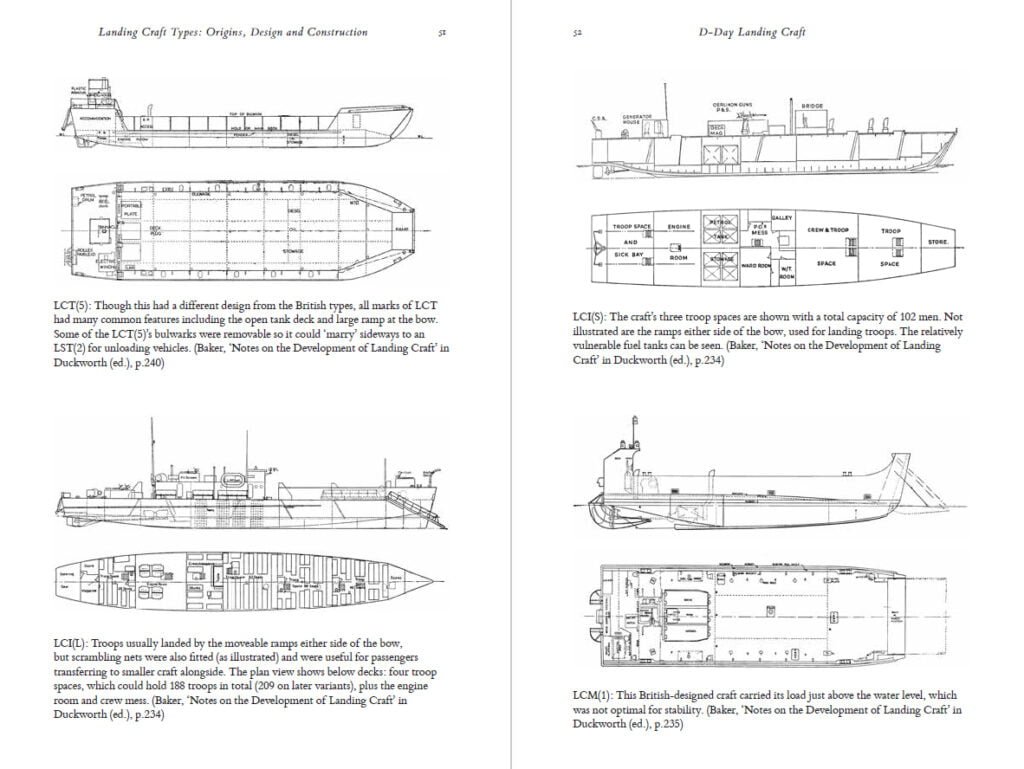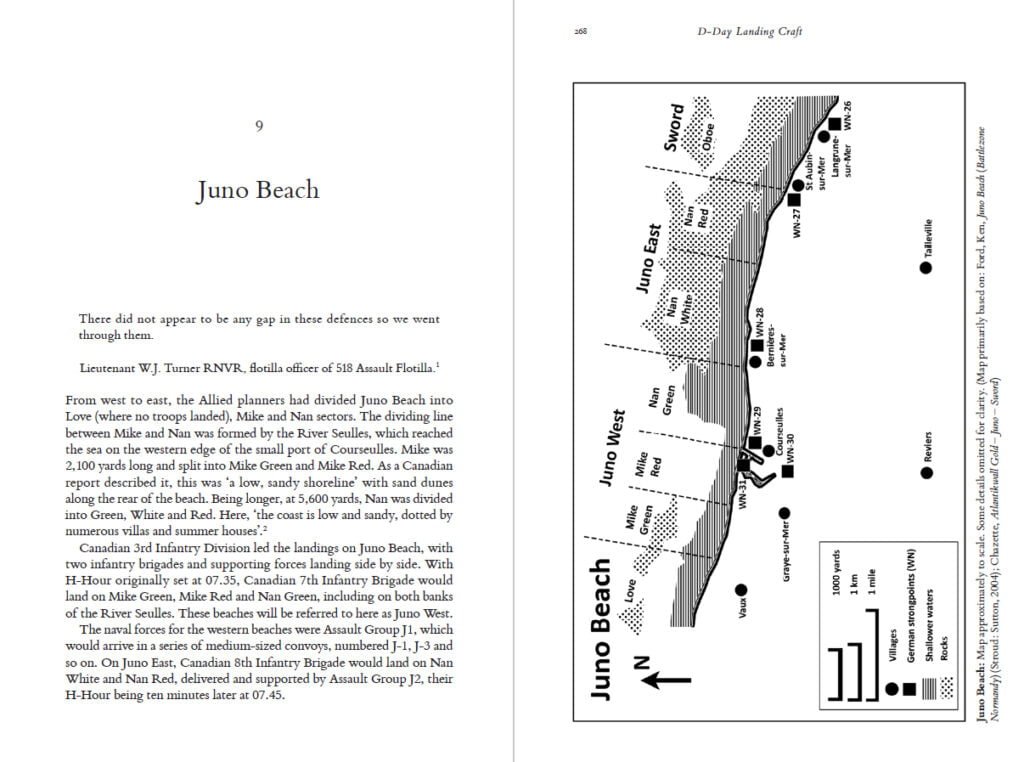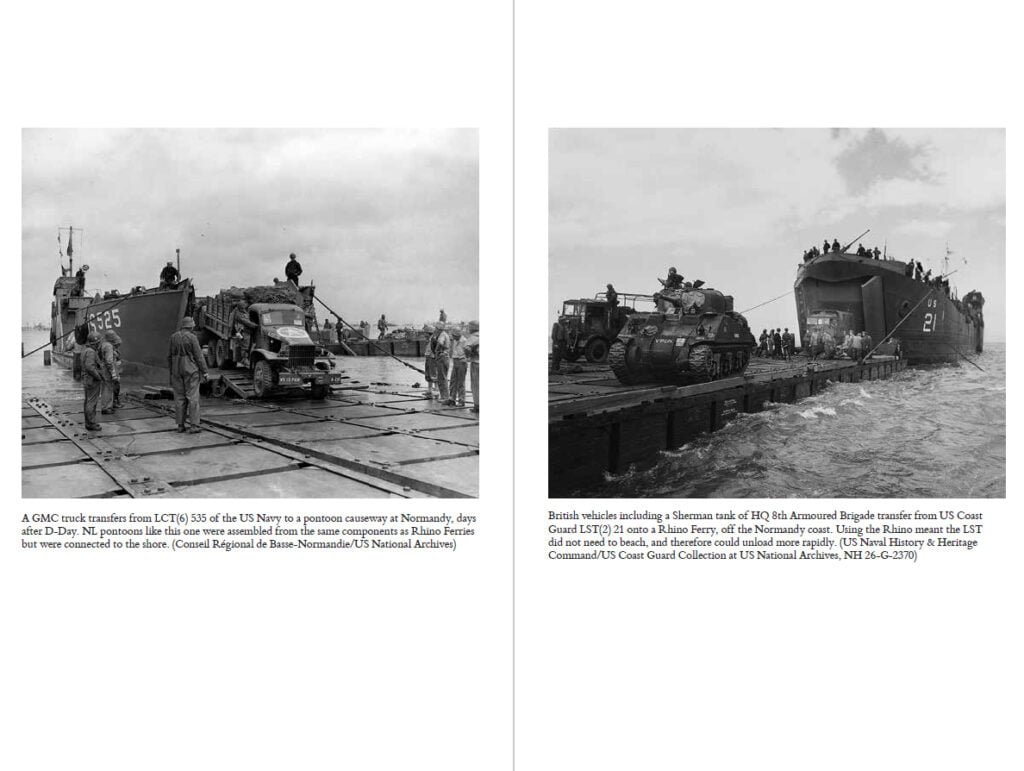“D-Day Landing Craft” covers many aspects of this topic: here is a summary of the different sections of the book, plus a few sample pages.
You can also read some testimonials about the book.
Landing craft types: origins, design and construction
Describes the main types of landing craft, landing ship and landing barges that were used on D-Day and in the remainder of the Normandy Landings. The book also looks at where these vessels were built, in both the UK and the USA.

Allied strategy and landing craft production
What became the plan for D-Day, and the landings over the subsequent weeks (Operation Neptune) was developed over the course of several years. In fact the final plan really only came together in the first half of 1944, after all the Allied commanders for D-Day had been appointed. Over the preceding years, landing craft manufacturing was always well behind what was required. At their meetings, the top Allied political and military commanders regularly discussed how to obtain more landing craft for this operation. There were many other competing demands on ship-building capacity, and other theatres of war sometimes had priority. This chapter explores the relationship between Allied strategy for the Normandy Landings and landing craft production.
Forging the weapon: landing craft crews, bases and training
Building landing craft was not enough. The Allied navies also needed to train sufficient personnel, not just for crewing the craft but also for supporting bases. The book considers landing craft crewmen from all Allied countries, the great proportion of whom came from the UK, the USA and Canada. The chapter also considers the particular experiences of serving on board landing craft during the Second World War.
The Plan
How were landing craft incorporated into the Operation Neptune plan? How did the Allied armies’ plans for D-Day connect with the availability of landing craft?
Embarkation, departure and crossing
This chapter examines the process of loading troops onto the many landing craft and ships, and the crossing to Normandy (including the 24-hour postponement of D-Day). Particularly for the crews of smaller landing craft, this was often a difficult – and sometimes even fatal – experience.

The five beaches on D-Day
The largest section of the book tells the story of D-Day from the perspective of landing craft and their crews – and to a lesser extent, the troops they carried – on the five D-Day landing beaches: Utah, Omaha, Gold, Juno and Sword Beaches. It describes the planned sequence of landings on each beach. Where possible it indicates the actual landing times if there were delays, and identifies the Royal Navy, United States Navy or Royal Canadian Navy units of landing craft involved. The timetable for the initial landings extended into 7 June 1944, and the book also considers the often overlooked follow-up forces.
After D-Day
The job of the landing craft was not completed on D-Day: in fact it was only just beginning. This post-D-Day aspect is a key part of the D-Day landing craft story. Many craft took part in the Shuttle Service, making further trips between the UK and Normandy to bring further troops, vehicles and supplies to France. Others were part of the Ferry Service, meaning that they remained off the Normandy coast for weeks (or longer), helping to unload larger ships. The chapter also looks at number of crewmen who were killed in the operation, as well as the number of landing craft that were lost or damaged both on D-Day and over the remainder of the campaign (whether due to the weather or enemy attack).

Order of Battle
This order of battle of landing craft and landing ships is based on wartime documents, but also takes into account last-minute changes in vessels, for example due to mechanical breakdown. It covers the five naval forces, one of which operated off each beach (Forces U, O, G, J and S) as well as Follow-up Forces B and L.
Roll of Honour
The Roll of Honour of crewmen landing craft and landing ships was too long to feature in the book, and is the subject of ongoing research, so it is featured on this website.
References (bibliography, archival, websites)
Footnotes and an extensive list of references may be useful in your own reading and research.
The book also includes a glossary of landing craft types and other terms, fifteen line drawings of landing craft and ships, ten maps and forty-six photographs.